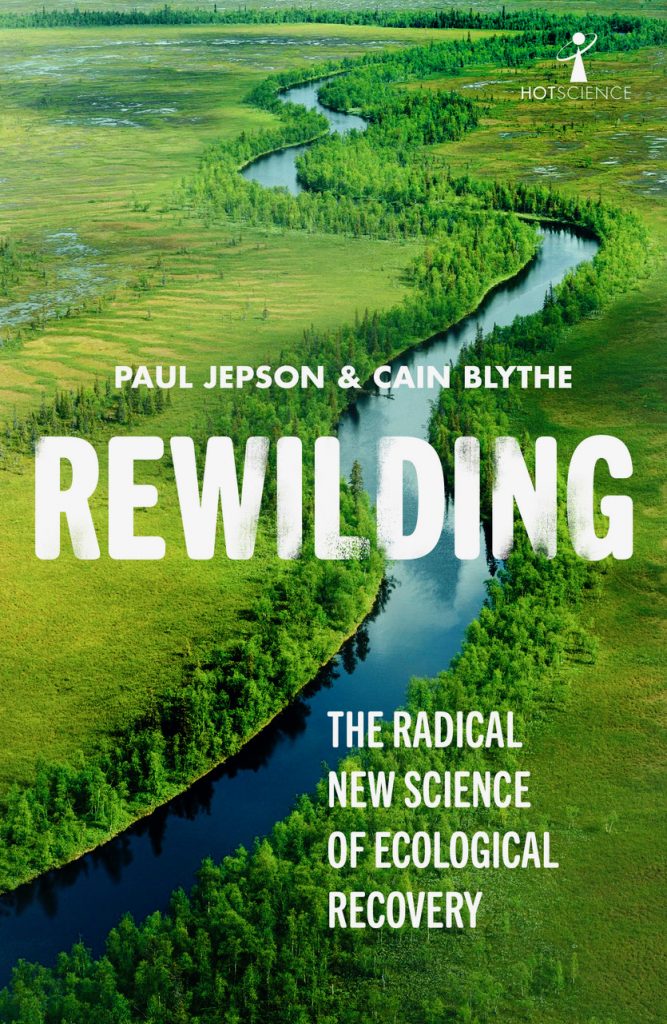Paul Jepson and Cain Blythe
Icon Books 2020
Sometimes daytime TV viewers are bombarded with advertisements about the dire state of koalas and other wildlife. On social media we are often fed a diet of alarmist information about environmental destruction. The thinking behind this seems to be that if anything positive is syuri@cuc.ac.jpaid then the listener will think everything is OK and not be motivated to act or donate.

I am not for one moment suggesting that there aren’t serious environmental issues facing humanity, but for a long time I have thought that this overly negative approach can be counter-productive, and it is one reason why I found this book to be such an illumination. On page 2 the authors say this:
“In particular, the relentless telling of stories of biodiversity decline and an impending sixth
extinction crisis, combined with newer anxieties
over climate change, has led to a growing sense of despondency within the conservation movement. Many have started to lose hope and question whether they still want to devote their lives and careers to lessening harm and fruitlessly cataloguing the end of nature.”
This book offers some practical solutions to our environmental problems and some hope, although it certainly does not shy away from acknowledging the significant environmental problems and challenges facing humanity.
The book explains what is meant by rewilding and mentions that some scientists have argued that the term has “become fuzzy and should be abandoned because it lacks the precision necessary for robust scientific analysis.” The authors do not agree and argue that the term can be applied to a range of activities which might be different, but which “all emphasise the restoration of ecological functions and encourage a better understanding of the processes, dynamics and connectivity of ecosystems.”
The book is full of original ideas and concepts. At least many were new and original to me and will be to many readers with no training or expertise in the area.
Early on the authors look at the question of what baseline should be adopted when considering biodiversity. Should it be the way nature was at the beginning of the industrial era as is often assumed? This book argues for multiple biodiversity baselines.
We are then introduced to some examples of rewilding, such as the well-known reintroduction of wolves into Yellowstone National Park, but also to the lesser known, but more radical and controversial nature restoration project, referred to as OVP in Holland. We are told:
“The OVP experiment involved the reassembly of a guild of large herbivores, including ‘wilded’ horses and cattle and red deer, to create a Serengeti-like landscape. The results were startling – populations of small birds and small mammals rebounded…
However, the OVP also provoked controversy from farmers and citizens who believed that allowing cattle and ponies to starve in hard winters is cruel and unjustifiable.”
Interesting stuff.
It is noted that where some of the original wildlife of a region has become extinct it is possible to use substitutes with similar characteristics to the original. The example given is on the island of Mauritius where “non-native tortoises have been successfully introduced as ‘taxon substitutes’ for an endemic giant tortoise, the extinction of which had caused ecosystem dysfunction and loss of native wildlife.”
The book makes the point that rewilding is not anti-globalism, and it doesn’t seek to restore what industrialisation has destroyed or damaged. It is realistic and pragmatic:
“Rather, it is about restoring networks of interactions between communities of organisms and their physical environment, along with the ecological processes that emerge from these interactions.”
And:
“A goal of rewilding is to release landscapes from engineered structures and agricultural inputs so that the variety and abundance of ecospaces reappears.”
The authors suggest that rewilding activities do not need to be a drain on scarce government coffers and point to the southern African example where, following a period in the 1980’s when much wildlife was wiped out, governments have encouraged the development of a “wildlife economy” which has resulted in a win for the environment and a win for struggling communities. The book says:
“By 2010 there were over 10,000 private wildlife ranches in South Africa. Private landowners have rewilded landscapes, supported an abundance of wildlife, and brought a level of prosperity and stability to rural areas.”
There are probably some good lessons here for the mid north coast of New South Wales. As we struggle to prevent the extinction of our koalas and other native species we tend to focus solely on the need for more government owned national parks, when perhaps private landowners can also make a significant contribution to the environment and maybe generate some income along the way. As they say:
“…rewilded systems offer the potential to simultaneously address a suite of concerns – climate change, biodiversity loss, flood management, soil health, ethical food production and rural depopulation.”
This is an easy book to read with lots of fascinating, interesting and surprising ideas. It’s well worth a read.
Highly recommended.
John Watts
*A group of organisms that are assumed to be related.
